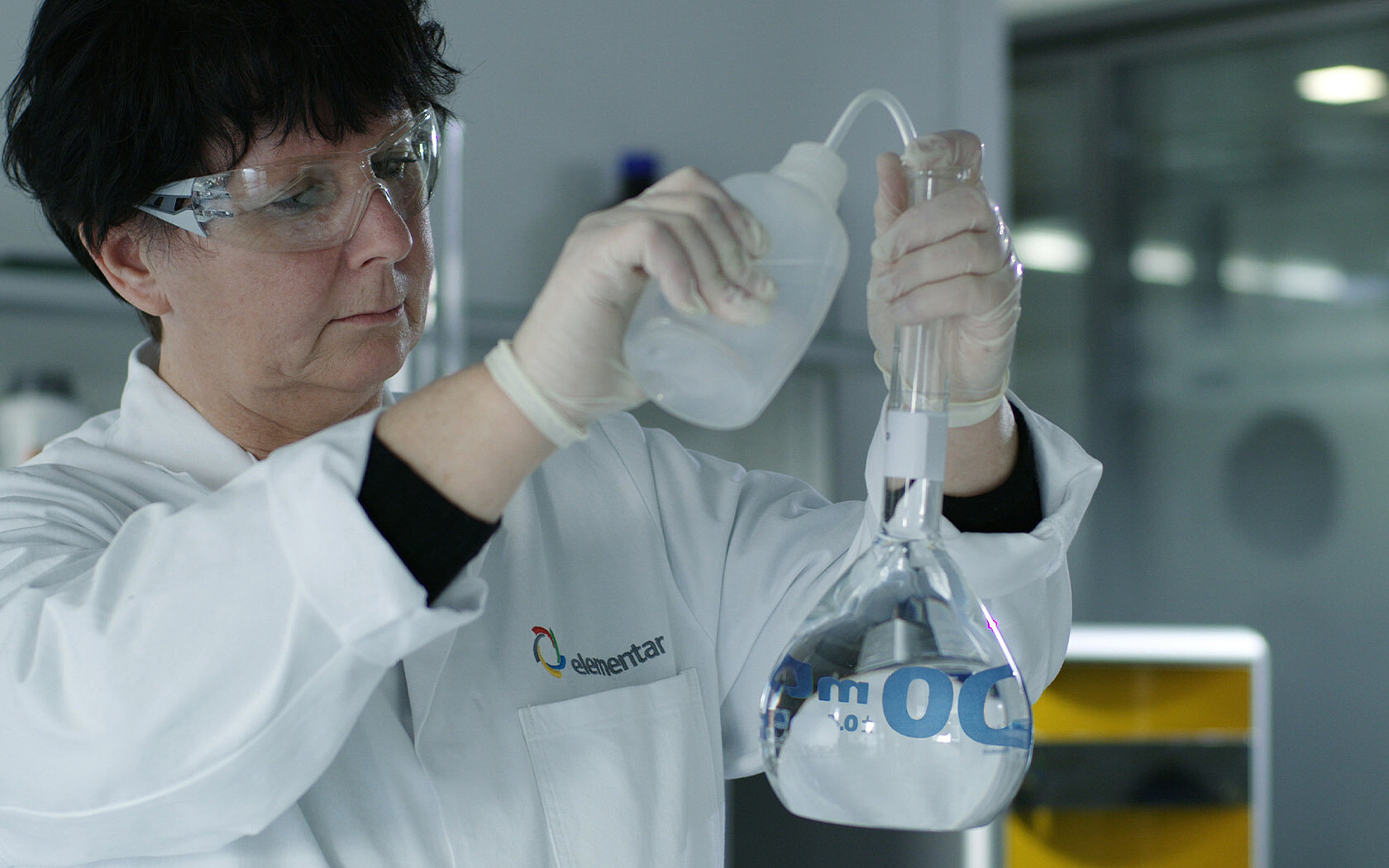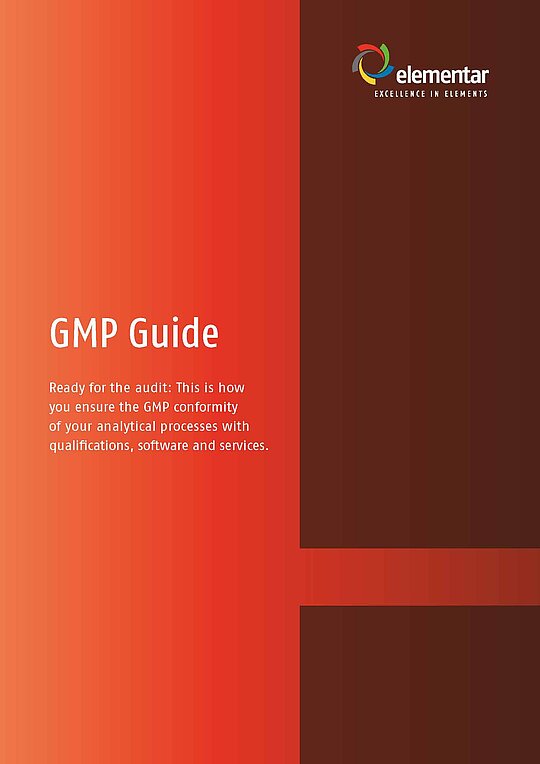GMP in use: Even the smallest sample quantities are sufficent

Part 2 of our GMP blog series: Simplifying net pedtide determination
In our first blog post (GMP analysis without risks and side effects), we familiarized you with the world of Good Manufacturing Practice (GMP). In this article, we focus on the practical aspects, with examples of net peptide determination and cleaning validation.
It all depends on the net peptide content
For some years now, so-called peptides have been of interest as active ingredients, as they are easy to produce synthetically and influence a wide range of processes in the body. Peptides are chains of up to 100 amino acids that are linked via peptide bonds. Their biological properties depend on the number of amino acids and their position in the chain. There are peptides that have an anti-cancer, cholesterol-lowering or anti-inflammatory effect. This makes them attractive to the pharmaceutical industry and as additives in cosmetics or food supplements.
Peptides are usually supplied as a freeze-dried powder. However, 1 milligram of this powder contains only 60 to 80 percent peptide material. In order to incorporate the peptide powder into a therapeutic agent in the correct dosage, the amount of peptide in the powder must be precisely determined - i.e. the net peptide content. As peptides are very expensive, only minimal sample quantities may be used to determine the net peptide content. The analysis needs to minimise manual work and costs, and still comply with GMP guidelines, meaning that the peptide content of the powder must be measured with maximum accuracy and precision. This sounds like a major challenge for an analytical laboratory, but thanks to modern analytical techniques, sample quantities of far less than 1 mg of peptide powder are now sufficient to meet these requirements.
The absolute nitrogen content of the peptide powder is determined using elemental analysis. The net peptide content can be easily calculated from this formula: Net peptide content = absolute nitrogen content of the powder ×100/(%N in the peptide). Here, "%N in the peptide" is a known quantity derived from the chemical formula of the peptide. You can see ow the sample preparation and analysis works in this video from CUP Laboratorien Dr. Freitag GmbH.
Apart from weighing and packing the peptide powder in tin foil, the analysis is fully automated and only takes about five minutes. Elemental analysis has now become the gold standard for net peptide determination. As is usual with this method, the sample is burned and completely converted into gas. The nitrogen content of the peptide is then detected using a thermal conductivity detector and determined using specialized analysis software.

Safe cleaning processes for production facilities in the pharmaceutical industry
In addition to elemental analysis, TOC analysis supports pharmaceutical manufacturers in GMP-compliant production, for example in cleaning validation. This is a procedure used to prove that cleaning methods for production facilities and medical devices have worked effectively. Manufacturers often use multi-purpose facilities in which both medicinal and non-medicinal products are produced. In order to avoid unwanted cross-contamination, these systems must be reliably cleaned and the results of this cleaning proven.
The determination of total organic carbon (TOC) is suitable for this purpose, as this is a sum parameter that determines all organic contamination, for example from active ingredients or cleaning agents. In practice, TOC is analyzed both in the rinse water from the last cleaning sequence ("final rinse") and in swab samples from areas that are particularly difficult to clean.
In summary, when it comes to applications under GMP standards, it is important that we can fully rely on the safety of the pharmaceutical products used in order to stay healthy or become healthy.
To be continued...
In the third part of our series you will learn why digitalisation is becoming increaslingly important for GMP and what role plays compliance with CFR 21 Part 11 for companies.
If you don't want to miss the next articles, sign up for our newsletter and stay up to date. In the meantime, you can delve deeper into the topic in our GMP Guide.
GMP Guide: Ready for the audit
In this GMP guide, we collected information for you how to ensure GMP conformity of your analytical processes with qualifications, software and services. Furthermore, it contains application examples in the field of CHNOS analysis of different pharmaceutical samples, peptide content analysis, TOC analysis and cleaning validation as well as ADME studies in the product development phase. You will also find out how we can support you in the GMP-regulated environment with various services and worldwide contacts.

DOWNLOAD YOUR COPY
Fill in the form to receive your download link by e-mail.
By clicking on the "Subscribe" button, I consent to the receipt of personalized newsletters via e-mail by Elementar Analysensysteme GmbH and its group companies companies as well as the evaluation of my user behavior in this regard and - if available - the merging of this data with my data in our customer database. In order to receive newsletters from our group companies, it is necessary to transfer your above-mentioned personal data to these companies. We point out that these are partly located in so-called unsafe third countries outside the EU/EEA , in which no adequate level of data protection (e.g. by adequacy decision of the EU, Art. 45 GDPR) is guaranteed. In these countries, you may not be able to enforce your rights as a data subject, or only to a limited extent. In addition, it is possible that local government agencies access your data to a disproportionate extent. The transfer of data to these recipients is therefore only legitimized by your consent pursuant to Art. 49 (1) lit. a) GDPR, which you grant with your subscription. The newsletter can be unsubscribed at any time with effect for the future as well as my consent to the third country transfer can be revoked at any time. A revocation does not affect the lawfulness of the processing carried out on the basis of the consent until the revocation. For further information, please refer to our privacy policy.
Do not miss any new articles
NEWSLETTER
We will constantly publish new blog articles. Register for our newsletter to stay up-to-date and get informed about latest blog articles, news and trends.
